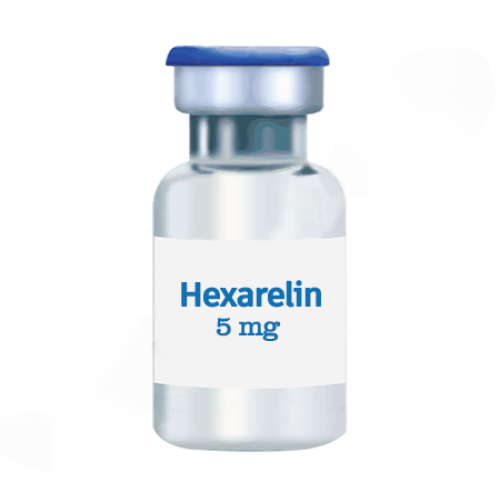Manufacturer: Sinoway
Pharmaceutical name: Hexarelin
Pack: 1 vial (5 mg)
Hexarelin promotes the secretion of GH and is more resilient to enzymatic breakdown compared to GHRP-6. It consists of 7 amino acids: H-His-D-2-Methyl-Trp-Ala-Trp-D-Phe-Lys-NH2, with a molecular weight of 887 Daltons. Its molecular formula is C47H58N12O6.
Growth Hormone Releasing Peptides (GHRP-2, GHRP-6, and Hexarelin) represent a small group of peptides that target the pituitary gland and hypothalamus to trigger the release of Growth Hormone (GH). Discovered two decades ago, these peptides have been shown through clinical studies to effectively stimulate the pituitary to produce endogenous Growth Hormone.
GHRP-2, GHRP-6, and Hexarelin are interchangeable medications that function through similar mechanisms.
Hexarelin is regarded as the most potent peptide for promoting GH secretion, also leading to notable increases in cortisol and prolactin levels. GHRP-2, while less potent than Hexarelin, results in a lower increase in cortisol and prolactin. GHRP-6 is less potent than GHRP-2; however, at doses up to 100 mcg, it does not affect cortisol and prolactin levels, and at doses above 100 mcg, the increase in these hormones is modest.
Another agent that stimulates endogenous GH release is the long-acting CJC-1295 (a Long-acting Growth Hormone Releasing Hormone Analog).
Common dosage regimen for Peptides:
Cycle duration: 16 months. Dosage is personalized and administered 1-6 times daily, starting at 25-50 mcg, with gradual increments of 25-50 mcg to minimize side effects. After reaching the target, one should return to the initial dose. Injections are typically done subcutaneously in the abdominal region, 30 minutes before or 1-1.5 hours following a meal. It’s advisable to maintain a 3-4 hour interval between injections, allowing the body adequate time to produce GH for subsequent release.

